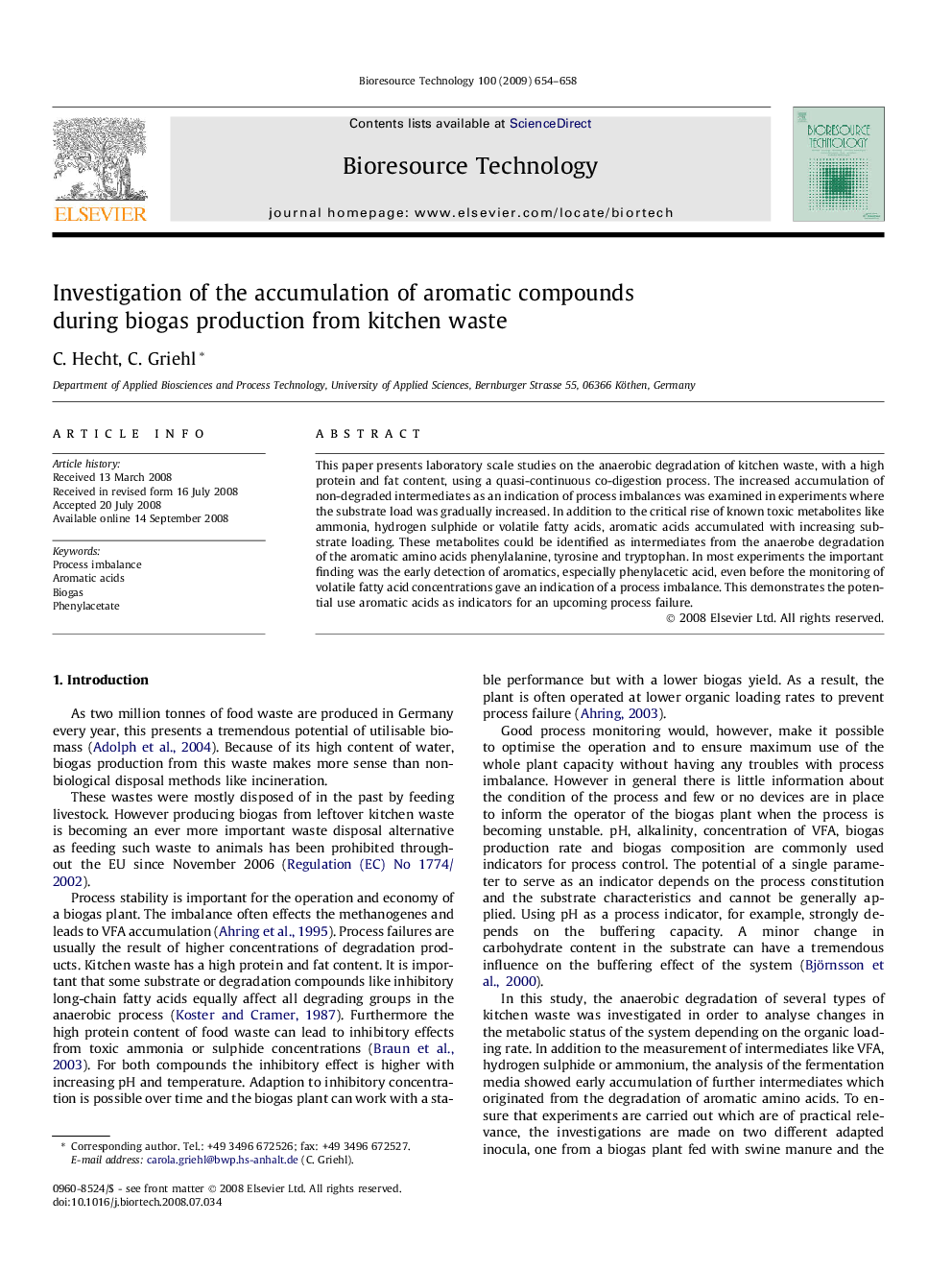| Article ID | Journal | Published Year | Pages | File Type |
|---|---|---|---|---|
| 683739 | Bioresource Technology | 2009 | 5 Pages |
This paper presents laboratory scale studies on the anaerobic degradation of kitchen waste, with a high protein and fat content, using a quasi-continuous co-digestion process. The increased accumulation of non-degraded intermediates as an indication of process imbalances was examined in experiments where the substrate load was gradually increased. In addition to the critical rise of known toxic metabolites like ammonia, hydrogen sulphide or volatile fatty acids, aromatic acids accumulated with increasing substrate loading. These metabolites could be identified as intermediates from the anaerobe degradation of the aromatic amino acids phenylalanine, tyrosine and tryptophan. In most experiments the important finding was the early detection of aromatics, especially phenylacetic acid, even before the monitoring of volatile fatty acid concentrations gave an indication of a process imbalance. This demonstrates the potential use aromatic acids as indicators for an upcoming process failure.
